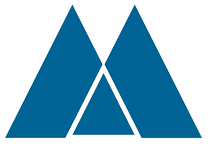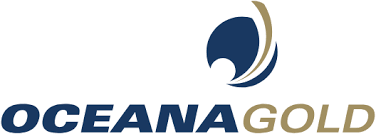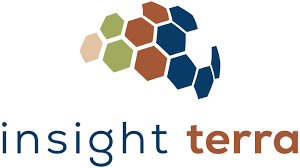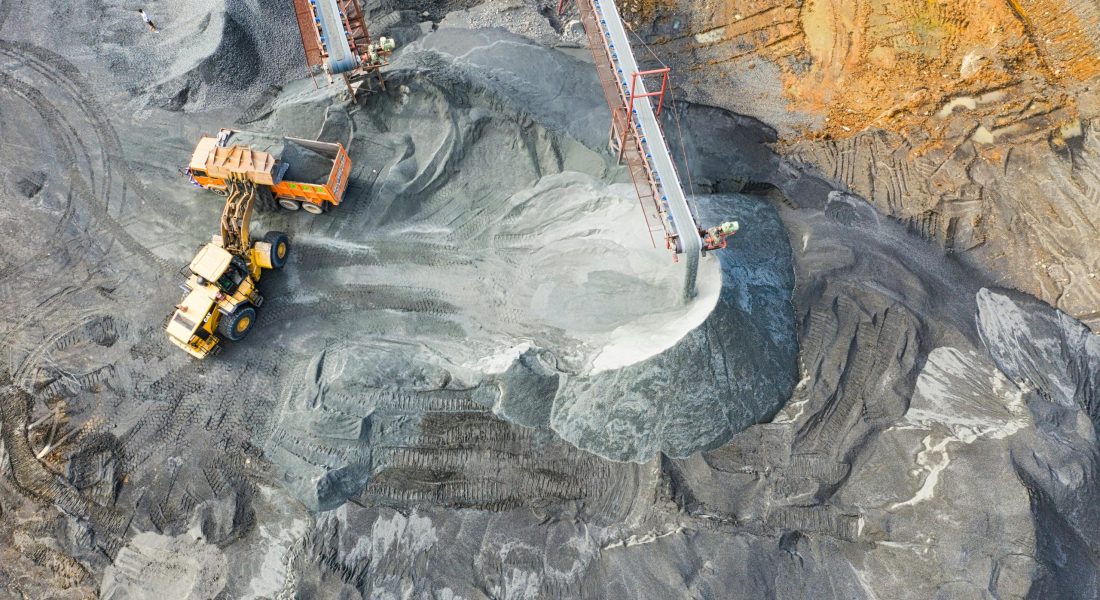Tailings management might not be the flashiest part of mining, but it’s one of the most important. With tighter regulations, environmental pressures, and hard lessons from past dam failures, the industry is rethinking how it handles its waste. Thankfully, 2025 has brought some smart new tools to the table – everything from real-time monitoring to AI-driven risk alerts – that make the whole process safer and easier to manage. Here’s a look at some of the leading solutions shaking things up this year.

1. FlyPix AI
Managing tailings in 2025 is no longer just about containment and compliance. It’s about understanding subtle ground movements, seepage risks, and infrastructure changes before they become visible problems. With our FlyPix AI platform, we use satellite, aerial, and drone imagery to automate the way tailings facilities are monitored. By applying advanced computer vision and AI models, we can detect shifts, water accumulation, and vegetation growth across large sites without manual field inspections. The focus for us is on precision and speed – providing near real-time insights that help engineering and environmental teams make timely decisions.
We also understand that every site behaves differently. That’s why we train custom AI models for specific tailings conditions and geographies. Whether a client needs to track small deformations on embankments or monitor changes in drainage and surrounding ecosystems, our approach adapts to the data and objectives. Using FlyPix AI, we aim to make tailings monitoring more systematic, transparent, and data-driven, reducing the uncertainty that often surrounds post-operation maintenance and active dam management.
Key Highlights:
- Automates analysis of satellite, aerial, and drone imagery for tailings facilities
- Detects structural changes, water buildup, and vegetation shifts in near real time
- Custom AI model training for site-specific monitoring tasks
- Integrates easily with existing geospatial workflows and datasets
- Supports large-scale monitoring without extensive manual work
Who it’s best for:
- Mining companies managing active or closed tailings storage facilities
- Environmental and geotechnical consultants seeking automated analysis
- Regulators or auditors monitoring compliance across multiple sites
- Research teams studying long-term ground stability and reclamation progress
Contact Information:
- Website: flypix.ai
- Email: info@flypix.ai
- LinkedIn: www.linkedin.com/company/flypix-ai
- Address: Robert-Bosch-Str. 7, 64293 Darmstadt, Germany
- Phone: +49 6151 2776497

2. IsoMetrix Tailings Management Software
IsoMetrix takes the headache out of tailings oversight by centralizing everything in one platform. Instead of juggling spreadsheets and scattered reports, mining teams can monitor risks, track compliance, and respond faster to potential issues. It’s built around global standards like the GISTM, which is a huge help if you’re trying to stay on top of safety and regulatory expectations.
In a world where information flows slowly can be dangerous, IsoMetrix makes sure everyone – from engineers to compliance officers – is on the same page. It’s not about replacing human judgment; it’s about giving teams clear, actionable data so nothing slips through the cracks.
Key Highlights:
- Centralized digital system for managing all tailings facility data
- Built around GISTM and other international safety protocols
- Tools for monitoring, reporting, and auditing tailings performance
- Improved visibility into risks and compliance status
- Designed to reduce manual administrative workload
Who it’s best for:
- Mining companies managing multiple tailings storage facilities
- Environmental and risk management teams
- Compliance officers and sustainability departments
- Organizations aligning with international tailings management standards
Contact Information:
- Website: www.isometrix.com
- E-mail: info@isometrix.com
- Twitter: x.com/IsoMetrixGRC
- LinkedIn: www.linkedin.com/company/isometrix-software
- Address: 44 Milton Avenue Alpharetta, GA, 30009 Atlanta USA
- Phone: +1 888 501 7205

3. GDMS Tailings Management Software
GDMS provides an integrated 3D, cloud-based platform built to support safer and more transparent management of tailings storage facilities (TSFs). Their system focuses on helping mining operations maintain compliance with international standards such as the GISTM while improving how data, monitoring, and design processes connect. By combining modeling, visualization, and centralized data management, GDMS enables teams to keep a consistent view of tailings performance and associated risks. Instead of juggling spreadsheets, technical drawings, and siloed reports, engineers and environmental managers can interact with live models and shared datasets that support more informed decisions about stability, water balance, and maintenance planning.
As tailings management becomes more data-driven in 2025, tools like GDMS fit into a broader shift toward real-time oversight and predictive management. Their approach highlights the growing role of digital twins and immersive visualization in environmental safety. Rather than just storing data, the software allows users to interpret it spatially, which makes it easier to identify patterns or early indicators of risk. This combination of data visualization and operational insight aligns well with current global expectations for transparency and sustainability in mining operations.
Key Highlights:
- 3D cloud-based platform for tailings monitoring and management
- Built-in tools for design interrogation and verification
- Supports GISTM compliance and governance standards
- Centralized data repository for multi-user collaboration
- Visualization features that improve understanding of TSF behavior
Who it’s best for:
- Mining companies managing tailings storage facilities
- Engineers and geoscientists involved in TSF design and monitoring
- Environmental and risk management professionals
- Organizations adopting digital twins and data visualization for operational safety
Contact Information:
- Website: gdms.com.au
- E-mail: info@gdms.com.au
- LinkedIn: www.linkedin.com/company/geoscience-data-management-systems-pty-ltd
- Address: Garden Office Park, B355 Scarborough Beach Road Osborne Park, Western Australia 6017
- Phone: 08 6444 7988

4. Davra Sentinel
Davra Sentinel is a tailings management platform developed to streamline how mining operations monitor, collect, and report data across multiple sites. Built on the Davra Industrial Internet of Things (IIoT) platform, it connects sensors, drones, and satellite data into one system, allowing teams to track changes in tailings storage facilities in real time. The platform is designed to align with the Global Industry Standard on Tailings Management (GISTM), helping organizations maintain consistent reporting and operational control. Instead of relying on manual readings and static reports, Sentinel automates much of the data collection process, reducing the likelihood of human error and supporting quicker responses when conditions shift.
In 2025, when digital oversight and environmental accountability are shaping the future of mining, Sentinel represents a practical example of how IoT and Earth observation technologies are merging in tailings management. By integrating satellite imagery provided through the European Space Agency’s Incubed program, the system helps detect subtle changes in terrain or seepage that might indicate potential risks. The ability to visualize multiple sites from a central platform supports a more proactive and coordinated approach to tailings safety, making it easier for operators to meet regulatory expectations while maintaining operational awareness.
Key Highlights:
- Integrates IoT sensors, drones, lidar, and satellite data for continuous monitoring
- Designed to support GISTM compliance and standardized reporting
- Central dashboard for managing multiple sites and environmental parameters
- Automated alerts linked to response plans for faster risk mitigation
- Earth observation features for detecting seepage and land changes
Who it’s best for:
- Mining operations managing several tailings storage facilities
- Engineers and compliance teams overseeing GISTM reporting
- Environmental specialists monitoring surface changes and stability
- Organizations adopting IoT-based automation for operational safety
Contact Information:
- Website: www.davra.com
- Twitter: x.com/davra_iot
- LinkedIn: www.linkedin.com/company/davra-networks
- Address: 440 N. Wolfe Rd. Sunnyvale CA 94085 USA

5. OceanaGold Tailings Management
OceanaGold takes a structured, engineering-driven approach to managing tailings across its global mining operations. Their tailings storage facilities (TSFs) are designed and maintained according to both host country regulations and internationally recognized standards, including alignment with the Global Industry Standard on Tailings Management (GISTM). Each facility is tailored to local geological and operational conditions, with independent technical experts involved in design, construction, and ongoing monitoring. Regular third-party reviews, detailed annual reports, and peer assessments form part of their long-term strategy to ensure structural integrity and minimize environmental risk throughout the entire lifecycle of each facility.
Their system covers a range of tailings management methods, from downstream construction and in-pit storage to paste backfill in underground operations. By applying different approaches across sites in New Zealand, the Philippines, and the United States, they aim to balance operational efficiency with environmental stewardship. In practice, this means constant data collection, safety inspections, and progressive rehabilitation of closed sites. As tailings oversight becomes a central topic in mining sustainability for 2025, OceanaGold’s model illustrates how established producers are integrating technical precision, external review, and adaptive management into everyday practice rather than treating it as a one-time compliance effort.
Key Highlights:
- Uses multiple tailings storage approaches, including downstream, in-pit, and paste backfill
- Aligns with the Global Industry Standard on Tailings Management (GISTM)
- Independent technical experts oversee design, construction, and monitoring
- Regular internal and third-party reviews ensure structural and environmental safety
- Long-term monitoring and rehabilitation programs for closed facilities
Who it’s best for:
- Mining companies focused on life-of-mine tailings planning
- Environmental and geotechnical teams managing compliance and risk
- Operations aiming to integrate international standards into everyday practice
- Organizations seeking examples of large-scale, multi-site tailings governance
Contact Information:
- Website: oceanagold.com
- E-mail: info@oceanagold.com
- Twitter: x.com/OceanaGold
- LinkedIn: www.linkedin.com/company/oceana-gold
- Address: Suite 1020, 400 Burrard Street, Vancouver BC V6C 3A6
- Phone: +1 604 678 4123

6. Hatch Integrated Tailings Management
Hatch’s Integrated Tailings Management platform focuses on connecting and digitizing the various activities involved in modern tailings operations. Their system brings together real-time monitoring, compliance tracking, communication, and reporting in a single environment, allowing teams to respond faster to emerging risks and maintain operational continuity. By centralizing historical and current data, they help operators identify trends and potential issues across a tailings site, while also preserving critical site knowledge for future team members. This approach reflects a broader shift in 2025 toward integrated, data-driven tools that provide a holistic view of tailings storage facilities (TSFs) rather than relying on isolated systems or spreadsheets.
Beyond monitoring, HITM emphasizes structured workflows and GISTM conformance management. It allows operators to manage multiple sites from a centralized platform, automate alerts, and capture clean, actionable data for analysis and reporting. The system also supports AI-ready data exports, enabling more advanced modeling and predictive analytics for water management, deposition trends, and operational planning. In the context of top tailings management tools in 2025, HITM illustrates how digital platforms can combine operational oversight with compliance management, helping mining teams adapt to growing scrutiny and evolving standards.
Key Highlights:
- Centralizes monitoring, reporting, and compliance for tailings operations
- Supports GISTM conformance and simplifies audit tracking
- Integrates data from hundreds of sensor types without system replacement
- AI-ready data enables predictive analytics and modeling
- Scales from single-site to multi-facility operations
Who it’s best for:
- Mining operators managing multiple tailings storage facilities
- Teams seeking integrated, real-time monitoring of TSFs
- Compliance and safety managers tracking regulatory requirements
- Organizations looking to leverage structured data for predictive analysis
Contact Information:
- Website: www.hatch.com
- Twitter: x.com/HatchGlobal
- LinkedIn: www.linkedin.com/company/hatch
- Address: 601 South Figueroa St. Suite 4300 Los Angeles California 90017 United States
- Phone: +1 213 683 1495

7. Insight Terra Tailings Insight
Insight Terra’s Tailings Insight is all about keeping a constant eye on your tailings storage facilities (TSFs). Instead of relying on manual inspections, the platform pulls in data from sensors, geotechnical instruments, and environmental sources to give operators a real-time snapshot of conditions. Think of it as a way to turn mountains of raw data into actionable insights – so teams can respond to potential problems before they escalate.
It’s not just monitoring either. Tailings Insight emphasizes accountability, making sure everyone involved – operators, engineers, and regulators – is on the same page. Automated alerts and centralized records mean teams can track multiple facilities at once and stay aligned with regulations. It’s the kind of tool that makes managing complex sites feel a little less stressful.
Key Highlights:
- Real-time TSF monitoring with integrated data streams
- Supports GISTM compliance and Principle 7 requirements
- Automated alerts and notifications for risk events
- Centralized data management and visualization
- Scalable platform for multiple sites and complex operations
Who it’s best for:
- Mining operators needing continuous monitoring of tailings dams
- Safety and risk management teams tracking environmental and structural conditions
- Compliance officers managing regulatory reporting and audits
- Organizations seeking actionable insights from integrated tailings data
Contact Information:
- Website: www.insightterra.com
- E-mail: info@insightterra.com
- LinkedIn: www.linkedin.com/company/insight-terra
- Address: 112 Jermyn Street London SW1Y 6LS Great Britain

8. Metso Tailings Solutions
Metso takes a slightly different approach – focusing on the processes behind tailings management. They help mining operations manage, repurpose, and reduce water use across all sorts of tailings: conventional, thickened, paste, filtered, you name it. Their solutions combine lab testing, on-site experiments, and flowsheet development to make sure everything from start to finish is optimized.
For 2025, this is all about efficiency and sustainability. Metso’s tech helps teams recover water, improve filtration, and reduce the physical footprint of tailings facilities – all while keeping operations running smoothly. It’s a reminder that tailings management isn’t just about compliance; it can also be smart and resource-conscious.
Key Highlights:
- Solutions for conventional, thickened, high-density, paste, filtered, and hybrid tailings
- Optimizes water recovery and reduces freshwater consumption
- Reduces plant footprint with compact and efficient designs
- Advanced filtration and separation technologies
- Supports full lifecycle tailings management from test work to implementation
Who it’s best for:
- Mining operators seeking sustainable tailings management solutions
- Process engineers managing water use and filtration efficiency
- Teams planning long-term lifecycle strategies for tailings facilities
- Projects requiring integration of multiple tailings types and technologies
Contact Information:
- Website: www.metso.com
- Facebook: www.facebook.com/MetsoGlobal
- Twitter: x.com/metsoofficial
- Instagram: www.instagram.com/metsoofficial
- Address: 2715 Pleasant Valley Road 17402 York, PA

9. Seequent Tailings Management
Seequent Tailings Management emphasizes turning complex tailings storage facility (TSF) data into actionable insights through a connected, governance-driven digital solution. Their approach uses a cloud-based digital twin to consolidate historical and real-time data, enabling near real-time monitoring of TSF conditions. In 2025, this method represents a shift in tailings management toward proactive risk assessment, allowing teams to anticipate performance issues rather than react after problems arise. By integrating geotechnical analysis and multi-stakeholder workflows, Seequent supports informed decision-making and enhances operational oversight across the mine lifecycle.
The platform also facilitates collaboration between engineers, regulators, and other stakeholders by providing centralized access to up-to-date information. Through digital twin modeling and geotechnical analysis, mining teams can visualize TSF behavior, track changes, and reduce uncertainty around environmental and safety risks. This approach demonstrates how connected, data-driven platforms are shaping the next generation of tailings management tools, bridging operational monitoring with predictive analytics to improve both safety and compliance.
Key Highlights:
- Cloud-based digital twin for real-time TSF monitoring
- Geotechnical analysis workflow for predictive insights
- Centralized data access for multiple stakeholders
- Improves operational oversight and risk assessment
- Integrates historical and current site data for decision-making
Who it’s best for:
- Engineers managing tailings storage facilities
- Mining teams aiming to enhance predictive risk analysis
- Organizations seeking centralized, real-time data access
- Stakeholders involved in regulatory compliance and reporting
Contact Information:
- Website: www.seequent.com
- E-mail: support@seequent.com
- Facebook: www.facebook.com/seequent.software
- Twitter: x.com/seequentglobal
- LinkedIn: www.linkedin.com/company/seequent
- Address: Charlemont Exchange, 5th Floor, Charlemont Street, Dublin, D02VN88
- Phone: 1800 948 368

10. Esri Tailings Management Solution for ArcGIS
Esri’s Tailings Management Solution for ArcGIS focuses on integrating spatial data, real-time monitoring, and predictive analysis into a single platform for managing tailings storage facilities (TSFs). In 2025, it exemplifies how geographic information systems are being applied to tailings management, providing a digital twin that consolidates IoT sensor data, manual measurements, and technical reports. By situating this information within its geographical context, teams can better assess risk, anticipate operational issues, and maintain compliance with the Global Industry Standard on Tailings Management (GISTM). The platform’s emphasis on spatial analysis allows users to visualize tailings data alongside environmental, geological, and topographical information for a more complete understanding of site conditions.
The solution also supports coordination between internal teams and external stakeholders through modules for emergency response, public engagement, and real-time monitoring. Automated alerts and predictive algorithms help highlight areas of concern before they escalate, while integrated dashboards make complex datasets easier to interpret. In the context of top tailings management tools in 2025, this approach demonstrates how combining GIS technology with a centralized knowledge base can improve safety, streamline compliance, and enhance operational insight throughout the tailings lifecycle.
Key Highlights:
- Digital twin consolidating sensor, manual, and modeled data
- GIS-based visualization for site-wide context
- Real-time monitoring and automated alerts
- Modules for emergency response and public engagement
- Predictive algorithms to identify and mitigate risk
Who it’s best for:
- Engineers and technicians managing tailings facilities
- Teams requiring integrated spatial and operational data
- Organizations aiming to align with GISTM compliance
- Stakeholders involved in environmental and community engagement
Contact Information:
- Website: esri.com
- E-mail: sitemanager@esri.com
- Facebook: www.facebook.com/esrigis
- Twitter: x.com/Esri
- LinkedIn: www.linkedin.com/company/esri
- Instagram: www.instagram.com/esrigram
- Address: Millennium House 65 Walton Street Aylesbury, HP21 7QG, BKM United Kingdom
- Phone: +44 (0)1296 745500

11. Canary Systems MLWeb®
Canary Systems’ MLWeb® platform provides a centralized approach to monitoring and managing tailings storage facilities by combining internal and external monitoring methods into a single system. In 2025, it represents one of the top tailings management tools by offering real-time insights into structural deformations, loads, and pore pressures while also tracking external shifts such as seepage and slope movement. By integrating a wide range of sensors – including piezometers, inclinometers, GPS units, ground-based radar, and robotic total stations – MLWeb® allows teams to correlate and visualize data across the entire facility. This integration supports a more complete understanding of TSF behavior and helps identify early warning signals of potential failure before they escalate.
The platform’s GIS-enabled environment ensures that all measurements are georeferenced, giving engineers and decision-makers a spatial context for operational and risk assessment tasks. MLWeb® also features configurable data import, scripting, and API options, which enable mining teams to bridge information silos and streamline reporting. By aggregating data from multiple sources into a single interface, the system reduces the lag between data collection and actionable insight, facilitating more informed decision-making. In the landscape of top tailings management tools in 2025, MLWeb® highlights the importance of integration and visualization in preventing accidents and improving facility oversight.
Key Highlights:
- Centralized integration of internal and external monitoring data
- GIS-enabled visualization and georeferencing
- Supports multiple sensor types including piezometers, radar, GPS, and inclinometers
- Configurable data import, scripting, and API options
- Real-time alerting and data correlation for early risk detection
Who it’s best for:
- Mining engineers responsible for TSF safety
- Teams managing complex or multi-facility tailings sites
- Organizations seeking comprehensive integration of monitoring technologies
- Stakeholders needing accurate, actionable data for risk assessment and reporting
Contact Information:
- Website: canarysystems.com
- Facebook: www.facebook.com/canarysystems
- LinkedIn: www.linkedin.com/company/canary-systems-inc
- Instagram: www.instagram.com/canarysystems
- Address: 5 Gould Road New London, NH 03257 USA
- Phone: +1-603-526-9800

12. McLanahan Tailings & Water Management Solutions
Managing tailings and water in mining isn’t exactly glamorous, but it’s critical – and McLanahan has some solid solutions for it. Their systems are all about separating solids from liquids so you can reuse water, reduce waste, and handle tailings more safely. Instead of relying on traditional settling ponds – which can be expensive, tricky to maintain, and sometimes risky – McLanahan uses a mix of thickeners, decanter centrifuges, and filter presses to make life easier for mining operators.
They cover a lot of ground: high-density, high-rate, and paste thickeners, plus decanter centrifuges and different filter press setups. There’s even extra gear like dewatering screens, hydrocyclones, and slurry pumps to help optimize water recovery and handle solids efficiently. The idea is to make tailings management more flexible, safer, and environmentally responsible, all while keeping operations running smoothly. By 2025, these kinds of solutions are essential for anyone serious about managing tailings responsibly and efficiently. They help mines recover more material, save water, and minimize environmental impact – without adding unnecessary headaches.
Key Highlights:
- Recover and reuse process water to reduce freshwater demand
- Separate solids from liquids to produce a manageable dry or low-moisture product
- Reduce or eliminate settling ponds and associated hazards
- Range of technologies including thickeners, decanter centrifuges, filter presses, and dewatering screens
- Equipment supports compliance with environmental regulations
Who it’s best for:
- Mining and aggregate producers managing large volumes of tailings
- Sites with limited water resources or high water costs
- Operators seeking to minimize environmental impact and improve safety
- Teams looking to optimize material recovery and reduce operational footprint
Contact Information:
- Website: www.mclanahan.com
- E-mail: sales@mclanahan.com
- Facebook: www.facebook.com/mclanahancorporation
- Twitter: x.com/mclanahancorp
- LinkedIn: www.linkedin.com/company/mclanahan-corporation
- Address: 200 Wall Street Hollidaysburg, PA 16648 United States
- Phone: +1 (814) 695 9807
Conclusion
Looking across the current landscape of tailings management, it’s clear that 2025 is seeing a shift from reactive approaches to more integrated, data-driven systems. Tools are no longer just about storing waste safely – they’re about understanding it, predicting behavior, and keeping both people and the environment safer in the process. Whether it’s digital twins, advanced monitoring platforms, or water recovery technologies, each tool brings a piece of the puzzle, helping operators make smarter, informed decisions every step of the way.
What stands out is how these solutions combine traditional engineering with modern analytics, allowing mines to see not just the present state of their tailings but potential future scenarios. This isn’t just a matter of compliance; it’s about turning mountains of leftover material into something manageable, safer, and more environmentally conscious. In a way, 2025 is showing that responsible tailings management isn’t an optional task – it’s an evolving, essential part of modern mining operations, and these tools are the ones leading the way.
